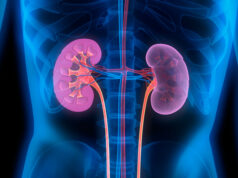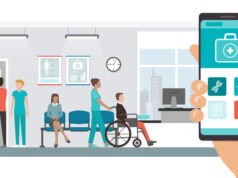The COVID-19 pandemic has reached all parts of the globe, affecting tens of millions of people: healthy and unhealthy, rich and poor. However, the most badly affected parts of the world are also the ones where access to healthcare is not universal and is often tied to financial capacity. This has clearly highlighted the weaknesses of health systems throughout the world, but especially those that provide universal health coverage (UHC) in legislation (de jure) rather than in practice (de facto) to their populations. It is important to highlight the fact that this revelation is not new, as health challenges have always disproportionately affected those in weaker positions in terms of socioeconomic standing, especially in countries with less developed health systems.
‘Vaccine nationalism’
Fortunately, towards the end of 2020, multiple COVID-19 vaccines were approved and are beginning to be distributed across the globe. However, the distribution presents its own set of challenges due to both cooling requirements as well as inequalities. Richer countries were and still are generally faster to negotiate access to vaccines with providers. The WHO has warned against “vaccine nationalism” as high-income countries are much better positioned than their less fortunate counterparts. The tragic reality is that it will take years to vaccinate poorer parts of the world because of lack of both resources to negotiate purchasing and infrastructure to distribute the vaccines.
This emphasizes the challenge with inequality and unfairness and shows that there remains a giant step in front of us to shift from de jure to the facto universal health coverage for most of the world. A biological infection in the shape of the SARS-CoV2 virus demonstrates the weakness of a polarised and fragmented global society to respond to a global pandemic. Further, the lack of widespread vaccination may lead to pockets of new COVID-19 strains flaring up that the current vaccinations might not protect against. This global health polarization may, therefore, lead to frequent new waves of COVID-19 not just in the low-income countries but they will also make their way to high income countries. The time to act is now with lessons learned from the COVID-19 pandemic. We need to establish a coordinated approach to help 90% of the world’s population rather than just the top 10%. Most importantly, for global equality and equity, but also because it is a necessary component in the effort to minimise and/or eradicate the COVID-19 pandemic.
The 10/90 gap
In the early 1990s, I lived for two years in Brazil, where I spent part of my time working with helping street orphans, i.e. the most vulnerable, forgotten, underserved part of the population, who have few chances of gaining better life conditions within their own lifetimes. The crucial basic health component for them was to get food to survive the day.
If we look at historical investment in the health sector, it is apparent that medical technologies have been developed to serve the well-off parts of the population. While most of the world has made the transition from mortality from communicable diseases to mortality, from non-communicable diseases such as cancer, large swathes of the world population have no use for advanced medical technologies such as cancer treatment as they are struggling with communicable diseases like malaria. As early as the 1990s, the Global Forum for Health Research was set up by the World Health Organisation’s Ad Hoc Committee on Health Research for the purpose of correcting the so-called 10/90 gap: the fact that just 10% of the world’s health research and development expenditure is used to conduct research into 90% of the world’s health problems.
Today, instead of looking specifically at health R&D, we can take a more holistic view of the problem and see that it is not only about research and development, but also about what kind of health solutions we are building. Across the globe, most companies are developing solutions that will benefit the richest 10% of the population, while neglecting the other 90%. We need to create sustainable healthcare solutions for the 90% that are broadly applicable outside the top 10%, bearing in mind that only about half of the global population has access to real healthcare.
‘Health is a fundamental pillar of societal progress and prosperity’
My wife is from Peru, which means that it has become my second home country, where I have witnessed at first hand the destructive effects of lack of access to healthcare, and how this holds a society back. Despite a vast wealth of natural resources, the benefits that this offers cannot be reaped; the clearest and most recent example being the health system meltdown due to COVID-19.
We need to realise universal health coverage, but that in itself is not enough. The right to health, not just the access to healthcare, requires a holistic understanding of how we can provide a better quality of life and wellbeing for the individual and society. In short, health is largely a matter of improving living conditions, and that requires a focus on the determinants of health.
We urge decision-makers to consider all the determinants of health, and to view health as something much broader than merely health policy. Social, economic, digital and infrastructural policies all affect health to varying degrees, and hence reforms should be considered investments in health, rather than just infrastructural costs. Health should, in other words, be considered in all policies, and we should invest in solutions that provide better health outcomes for the 90% of the world’s population who cannot be reached through better medical technologies alone.
At the Copenhagen Institute for Futures Studies, we are working with multiple projects that are attempting to implement the 10/90 approach in practice. Projects such as Nordic Health 2030, which focuses on providing better healthcare in the Nordic region through cross-border collaboration, or Movimiento Salud 2030, which focuses on how to create de facto universal health care in Latin America and make technology and knowledge available for use by all.
We are also focusing heavily on a project in Peru to create a pilot for how these 10/90 solutions can be applied in practice and scaled-up to cover the entire region. Health is a fundamental pillar of societal progress and prosperity, and of fairness, equality and equity. It is a necessary component of a fair and democratic society.
Bogi Eliasen is a futurist at the Copenhagen Institute for Future Studies and a member of the HIMSS Future50 Community.







